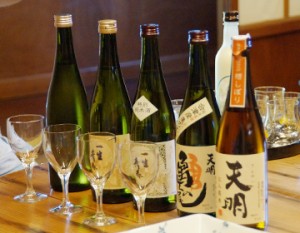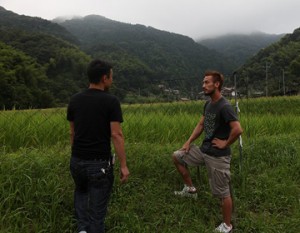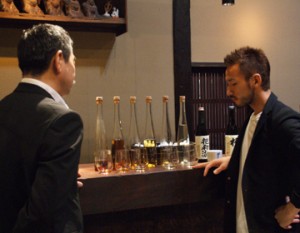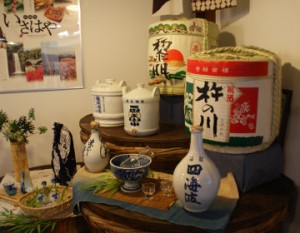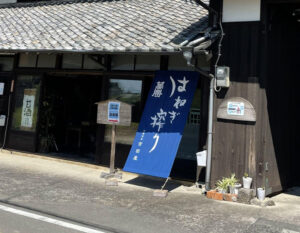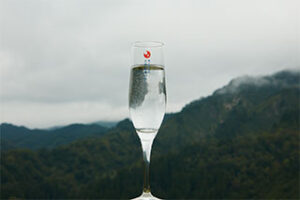Abe Sake Brewery” Recovers from the Threat of Going Out of Business
In Kashiwazaki City, facing the Sea of Japan in the Chuetsu region of Niigata Prefecture, there is a small sake brewery with a history of over 200 years. It is the Abe Brewery, which has been producing “Koshino Otokoyama,” a local staple sake brewed with the soft water of Kashiwazaki. Founded in 1804, the brewery employs an “uchi-toji” system, in which the head of the brewery serves as toji (chief brewer) and also manages the business, and Yuta Abe, the sixth-generation head, is currently in charge of production.
Before the fifth generation took over the family business, however, Abe Sake Brewery was in danger of going out of business. At the time, the company produced only 40 koku of sake, or about 4,000 bottles. That is, about 4,000 bottles of sake. This was not a very large production volume. At the time, Abe was working for a Tokyo-based company that operated an Internet restaurant management website. If I had returned three years later, our brewery would have collapsed,” he says.
The Challenge of Brewing Sake
To get more people to drink our sake, we need to make more sake.” Abe learned the basics of sake brewing at the Brewery Experiment Station. He learned the basics of sake brewing in a short period of time, just six weeks, he says. After that, he gradually invested in equipment to increase production, receiving instruction from his father and other senior brewers in the area. Now, eight years after returning to the brewery, production has increased to 240-250 koku.
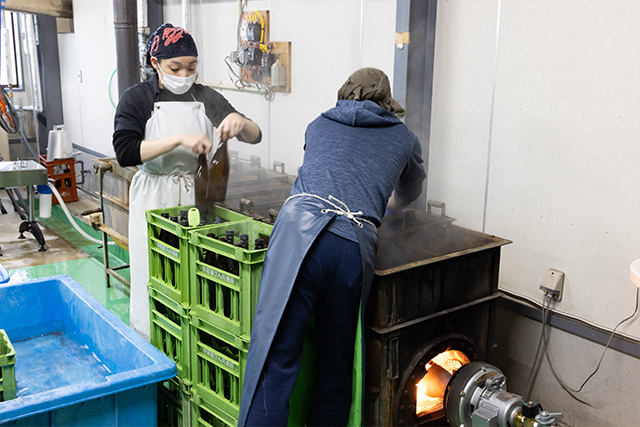
Because of Mr. Abe’s thoroughness down to the smallest detail, he increased the number of staff working at the brewery and accepted many trainees to create the sake brewing environment he sought. Many breweries in Niigata Prefecture are light and dry, and his predecessors favored dry sake. However, Mr. Abe wanted to try the exact opposite, and in the beginning he brewed sweet sake anyway.
After realizing that “if I don’t make sake that I think tastes good, I can’t do my best to market it,” he gradually shifted to making sake with a moderate sweetness and using acidity to give it a more defined flavor. He became thoroughly committed to the kind of sake brewing he was aiming for.
Competing in Tokyo, not in Niigata, a Sake Capital of Japan
Niigata is one of the largest sake-producing regions in Japan. There are four sake breweries in the city of Kashiwazaki. The local market will be left to other local breweries, as it has been in the past, and the company will venture out into the market. In other words, they decided to take a chance to increase their visibility in the Tokyo metropolitan area.
The goal was to make sake that would be chosen by restaurants. The first time I tasted sake was at a restaurant, and I thought it would be the perfect place to first get people to know about it.
In the first year, he took the sake he had made to sake stores in Tokyo, but the response was not positive. Some rejected Abe Shuzo’s original brand name, “Koshino Otokoyama,” because it was a combination of common sake brand names, and some even refused to buy it at all. It was not the smooth start he had envisioned. When he heard good news from his friends at Akatake Brewery and Kamonishiki Brewery, who were trying to make their first sake at the same time, he felt frustrated.
The time had finally come for the sales activities that had been so frustrating to him to be recognized. A local liquor store in Niigata agreed with Mr. Abe’s passion for sake brewing. They said, “We don’t care if it tastes good or not, we will support you anyway,” and began to sell to liquor stores they knew in Tokyo and to do business in Niigata and Tokyo. He encouraged us to sell the sake and use it as a war chest to make even better sake. The hardships he had experienced up to that point made the encounter all the more poignant, Abe says.
Thus, Abe Shuzo now produces the largest number of “Abe” series, which started in 2015. The series was created to create a signature product under a brand other than “Koshino-Oyama. The series emphasizes the balance between rice flavor and acidity, and offers a rich lineup of both standard and seasonal sake.
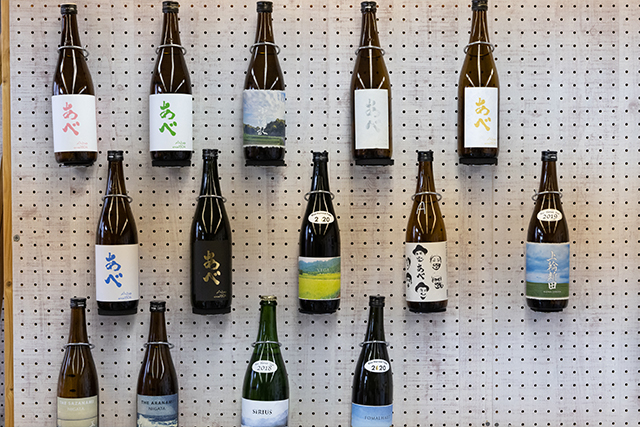
What is “Abe Shuzo” sake?
The clean label with two hiragana characters is also impressive. All of the rice used for the sake is 100% Niigata Prefecture rice, including Gohyakumangoku, Koshitanrei, Takananishiki, Ipponshime, and Koshikagura, all of which are suitable for sake brewing. Currently, 70% of the rice is locally grown in Kashiwazaki.
The sake is fired at a low temperature. The sake is sterilized while keeping the freshness in mind. However, the aroma is not lost. In addition, all sake is made with a lot of time and care. It should also be noted that all sake is squeezed in a traditional “tub” (fune), a device that slowly squeezes the sake by placing the mash in a sake bag. The process takes four days instead of the usual one day. This process softens the sake and gives it the softness that Mr. Abe is aiming for.
Kashiwazaki has both ocean and mountains, and rice paddies are just a stone’s throw away. We want to make sake that is uniquely Niigata,” he said, and so he has started a series of sake breweries that feature different rice paddies.
The sake is brewed using rice harvested in specific fields, such as the “Kaminarashinden area,” which features Niigata’s unique environment surrounded by the sea and mountains, and the “Noda area,” located inland from Kashiwazaki, allowing sake brewers to enjoy the differences in taste depending on the field.
A portion of the proceeds from the sales of this series is used to help contract farmers maintain their fields and to protect the landscape of Kashiwazaki. This is a sake to be enjoyed while envisioning a typical Niigata rural landscape of beautiful rice paddies.
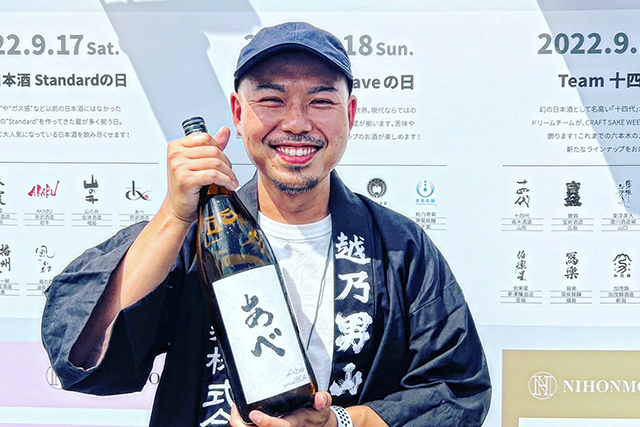
We want to increase opportunities for people to experience sake.
As he continues to take on new challenges, Mr. Abe says his desire to “continue to make good sake in a straightforward manner” grows stronger. I am now able to aggressively take on new challenges with the basic premise that I myself enjoy sake brewing and am willing to accept failure.” Abe says, “I am now aggressively taking on challenges with the mindset that it is okay to make mistakes. He is particularly focused on sake brewing with an emphasis on acidity. Instead of using multi-acidic yeast, he uses a common yeast used in the prefecture to produce acidity, and is conscious of bringing out the flavor of the rice and the acidity.
He says, “More than being recognized in the industry, I want to increase the number of general consumers who drink sake. I want to create opportunities for people to come into contact with sake. He is determined to continue to grow and develop. To achieve this, Mr. Abe continues to grow and take on new challenges.




